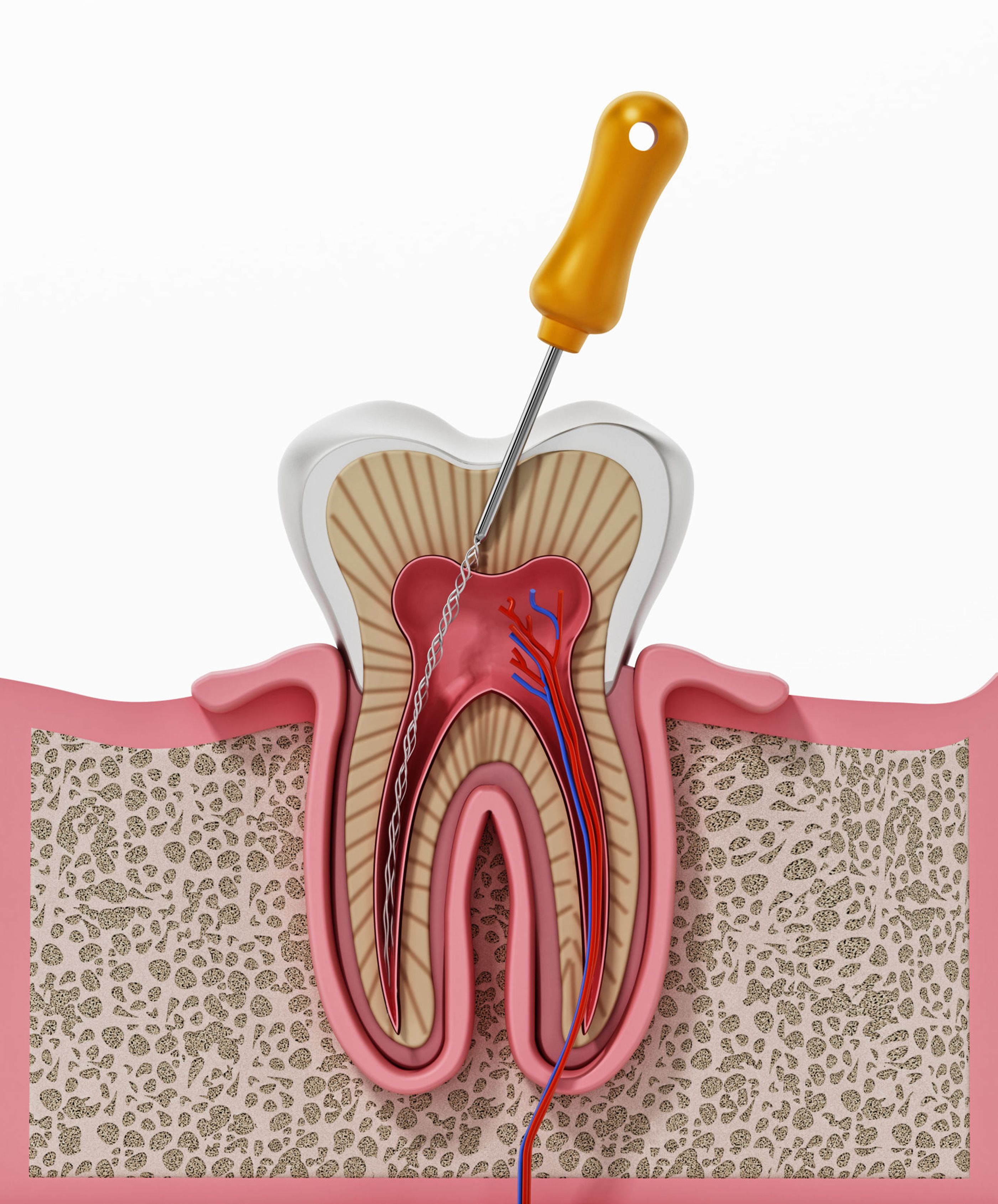Have you ever experienced severe toothache that won't go away no matter how many painkillers you take? If so, you might have heard your dentist mention the possibility of a root canal treatment. Although the mere mention of this procedure might make you anxious, understanding what happens during a root canal treatment can help ease your worries and give you a better idea of what to expect. In this article, we'll explore the ins and outs of root canal treatment, from the initial symptoms to the final steps of the procedure, so that you can feel confident and informed about your dental health.
"According to the American Association of Endodontists, an estimated 15 million root canal treatments are performed yearly in the U.S. About 90% of root canal treatments are successful, and most treated teeth can last a lifetime with proper care".
What is Root Canal Treatment?
Dentists use root canals or endodontic treatment to repair and preserve an infected or damaged tooth. It involves removing the infected or damaged tissue from the inside of the tooth, known as the pulp. Upon removing the pulp, the inside of the tooth is thoroughly cleaned and disinfected and then sealed with a filling material to prevent further infection. In most cases, the dentist places a dental crown on the treated tooth for additional support and protection.
Root canal procedure has a high success rate in saving damaged or infected teeth. Both a general dentist and an endodontist can perform it. Neglecting a damaged or infected tooth can cause pain, abscesses, and, ultimately, tooth loss. Therefore, a root canal treatment is often the best option for saving a tooth and preventing further dental problems

What are the Symptoms of Needing a Root Canal?
The indications of requiring a root canal treatment may differ based on the degree and site of the damage or infection. Some of the most common symptoms include:
- Severe toothache pain: This is often the most noticeable symptom of needing a root canal treatment. The pain may be constant, intermittent, sharp, throbbing, or shooting.
- Sensitivity to hot or cold temperatures: A tooth affected by hot or cold temperatures might indicate nerve damage or infection.
- Swelling or tenderness in the gums: If the gums around the affected tooth are swollen, tender, or painful to the touch, this could indicate an infection.
- Discoloration of the tooth: If a tooth has become discolored or darkened, this could be a sign of nerve damage or infection.
- Persistent bad breath: An infection in the tooth can cause a bad taste or odor, even after brushing and flossing.
- Visible damage to the tooth: If a tooth is cracked, chipped, or broken, this can create an opening for bacteria to enter the tooth and cause an infection.
If you undergo any of these symptoms, it's crucial to promptly visit your dentist to determine if a root canal treatment is required. Early diagnosis and treatment can help prevent the infection from spreading and improve the chances of saving the affected tooth.
What Happens During a Root Canal Treatment?
Root canal treatment prevents the need for tooth extraction. While the procedure may sound intimidating, modern techniques and anesthesia make it a relatively painless and effective solution for many dental problems. Here we'll discuss the procedural steps of a root canal treatment.
- Assessment and Preparation: Before the root canal treatment, the dentist or endodontist will conduct a thorough examination of the affected tooth and may take dental X-rays to ascertain the extent of the damage or infection. Afterward, they will apply a local anesthetic to numb the area and ensure the patient's comfort during the procedure.
- Access and Removal: The dentist or endodontist will create a small opening in the top of the tooth to access the pulp. Next, the dentist or endodontist will use specialized instruments to remove the infected pulp.
- Cleaning and Shaping: After removing the pulp, the dentist or endodontist will clean and shape the inside of the tooth, using small files to remove any remaining debris or bacteria. They may also use an antimicrobial solution to help disinfect the tooth and prevent future infection.
- Filling: Once the tooth has been thoroughly cleaned and shaped, the dentist or endodontist will fill the space inside the tooth with a rubber-like material called gutta-percha. It will help seal the tooth and prevent further infection.
- Sealing and Restoration: In most cases, the dentist or endodontist will place a temporary filling or crown over the tooth to protect it while a permanent restoration arrives. In some cases, a permanent crown or other dental restoration may be necessary to restore the appearance and tooth's function fully, depending on the extent of the damage.
- Follow-up: After the procedure, the patient must schedule a follow-up appointment with their dentist or endodontist to ensure the tooth is healing correctly and determine if further treatment is necessary.

What to Expect After a Root Canal Procedure?
It is common to experience discomfort or sensitivity for some days after a root canal procedure. The treated tooth may be susceptible to hot or cold temperatures. This sensitivity should gradually improve as the tooth heals.
Your dentist or endodontist may suggest over-the-counter pain relievers or prescribe medication to help manage discomfort after the root canal treatment.
Preparing Steps for a Root Canal Procedure:
- Schedule enough time: Depending on the case's complexity, root canal treatment can take up to a few hours. Make sure to schedule enough time for the procedure, and avoid making any other plans that day.
- Eat before the procedure: You can eat before the process, so having a meal or a light snack is vital. It will help prevent any dizziness or lightheadedness during the procedure.
- Avoid smoking: If you smoke, it is crucial to avoid it before the procedure. Otherwise, this substance may interfere with the anesthesia and increase the risk of complications.
- Discuss any concerns: If you have any concerns or anxiety about the procedure, discuss them with your dentist or endodontist beforehand. They can offer suggestions or prescribe medication to help you feel more comfortable.
- Arrange for transportation: Depending on the anesthesia used during the root canal procedure, you may need someone to drive you home. Make transportation arrangements beforehand to ensure a safe and comfortable ride home.
Advantages of Root Canal Therapy
- Root canal treatment preserves the tooth's natural structure.
- Root canal therapy relieves the excruciating pain caused by a damaged or infected tooth.
- Root canal treatment prevents the spread of infection to other teeth and improves oral hygiene by removing infected or damaged tissue from the tooth.
- Root canal treatment is often less expensive than alternative treatments, such as extraction and tooth replacement with a bridge or dental implant.
- Root canal treatment is typically completed in one or two appointments and is relatively quick and efficient.
- When a tooth is properly cared for, the root canal treatment that follows can last a lifetime.
Wrap Up:
Dental professionals often perform root canal treatment to prevent the need for tooth extraction, particularly when a tooth is damaged or infected. Although the thought of undergoing a root canal treatment can be intimidating, modern techniques and anesthesia have made the procedure relatively painless and highly successful.
A root canal treatment involves removing the damaged or infected pulp and sealing the root canal, which can restore the tooth's functionality and overall health, providing long-lasting relief from pain and discomfort. If you are experiencing any symptoms of a damaged or infected tooth, consult your dentist or endodontist to determine if a root canal treatment is necessary. A root canal-treated tooth can last a lifetime with proper care and maintenance, promoting oral health and well-being.
Contact Dr. Azadeh Hosseini and Dr. Ghazal Hosseini at Top Pinole Dental, your Pinole dentists, to learn more about Root Canal Treatment Procedures.
*Neither this nor any other content in this media is meant to prescribe, recommend, or prevent any treatment or procedure. We highly recommend that you get the advice of a qualified dentist or other medical practitioners regarding your specific dental condition.
1500 Tara Hills Dr., Suite 104A, Pinole, CA 94564
Monday – Saturday 8:00 AM to 5:00 PM
